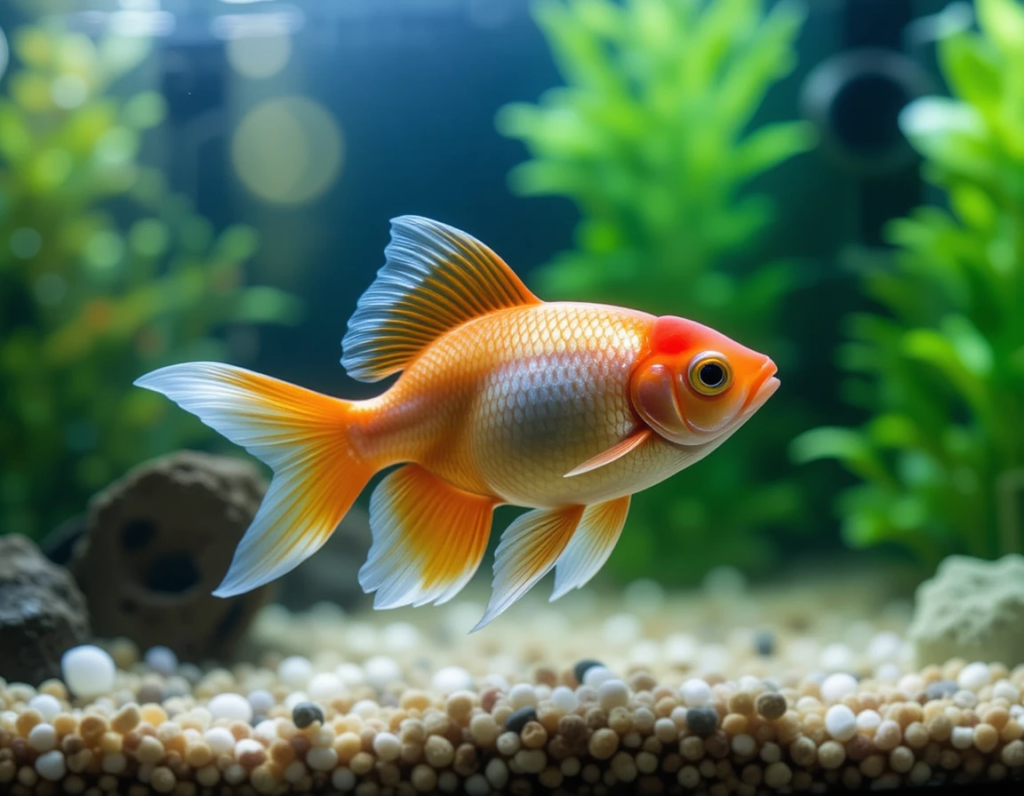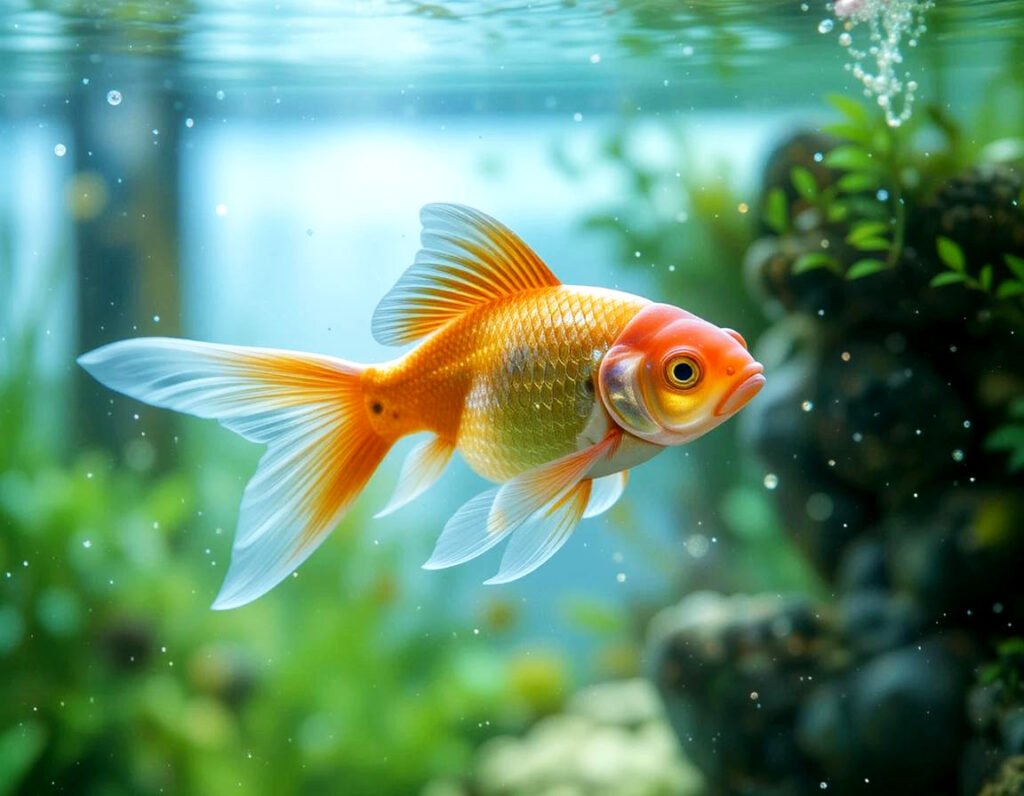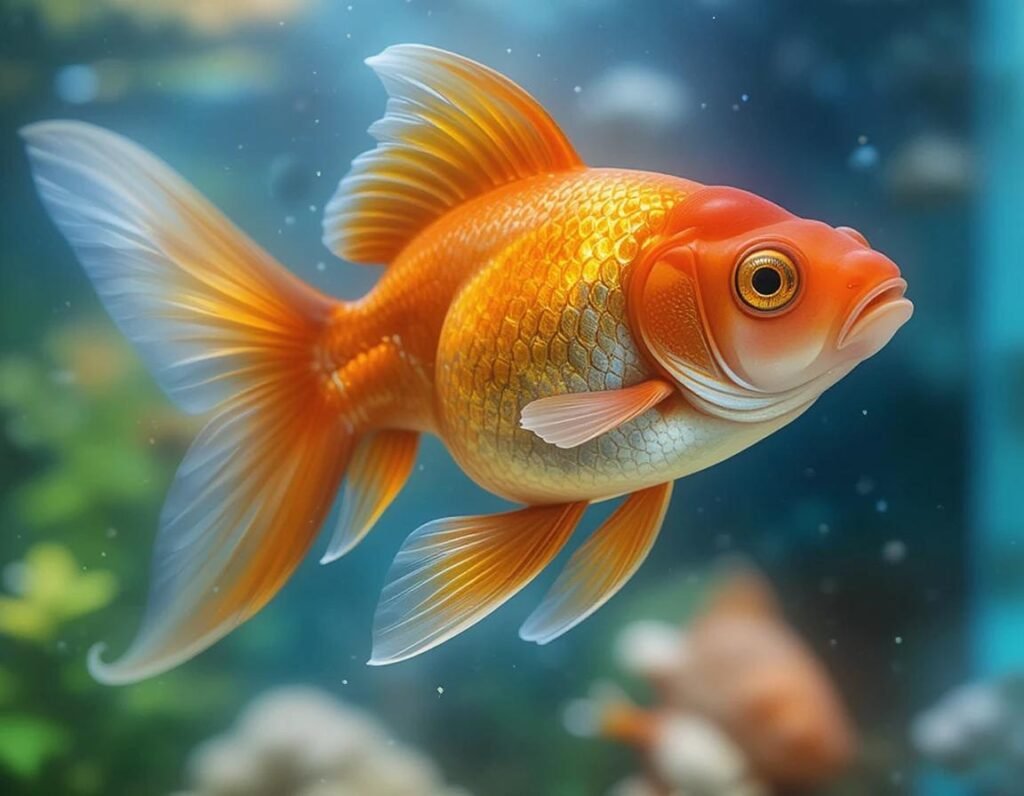
Goldfish Tank Cycling: The Ultimate Beginner's Guide (Without the Stress)
If you’ve just got yourself a shiny new goldfish and are eager to set up the perfect tank, congratulations! But before you start decorating with little castles and plastic plants, there’s something more important you need to do first: tank cycling. Yep, this might sound like a term you’d hear in a fitness class, but it’s way more crucial for your goldfish’s health than any treadmill session. Don’t worry, though—cycling a goldfish tank is a simple process once you get the hang of it, and it’s totally worth the effort!
What is Goldfish Tank Cycling?
In short, tank cycling is the process of creating a healthy and stable environment in your aquarium. It’s about getting the biological filtration system up and running, so your goldfish don’t end up swimming in toxic soup. You need to establish a balance of beneficial bacteria in the tank, which will help break down harmful substances like ammonia (from goldfish waste) into less harmful nitrites and nitrates. Sounds fancy, right? But trust me, it’s essential for a happy and healthy goldfish.
Why Is Tank Cycling Important for Your Goldfish?
You might be wondering, “Why do I need to cycle my tank? My fish looks like it’s doing fine in plain old water.” The thing is, goldfish are messy eaters, and their waste can quickly turn into harmful chemicals in the water if the tank isn’t properly cycled. If you skip this step, your fish might face ammonia poisoning or stress from fluctuating water conditions. This leads to sick fish, sad faces, and a tank that looks more like a swamp than a lovely aquatic paradise. Tank cycling prevents that nightmare.
How to Cycle a Goldfish Tank (Without the Tears)
1. Set Up the Tank (Yes, You Need the Basics First)
Before you dive into the cycling process, get the basics in place. Fill your tank with clean, dechlorinated water, add your filter (make sure it’s goldfish-friendly!), and ensure the water is at the right temperature. Goldfish like it cold, around 65-75°F (18-24°C), so adjust accordingly. Put in your decorations, plants, and substrate (gravel or sand) if you like, but make sure everything’s clean and free from chemicals.
2. Start the Nitrogen Cycle
Now for the fun part: introducing ammonia to the tank. This can be done either by adding a small amount of goldfish food, or—if you’re impatient—adding pure ammonia. It sounds strange, but this is how you kickstart the cycle. When the ammonia breaks down, it turns into nitrites (the bad stuff), which will then get converted into nitrates (the less harmful substance).
3. Wait (Like, Really Wait)
This is the hardest part: patience. Tank cycling can take anywhere from 3 to 6 weeks. Yes, you read that right—weeks! Don’t rush the process, as your fish’s future health depends on it. You’re basically setting up a biological filtration system, and that takes time. You’ll know your cycle is complete when ammonia and nitrite levels drop to zero, and your nitrate levels are safely under control.
4. Test the Water Regularly
Grab some aquarium test kits (don’t worry, they’re easy to use and not scary at all) and check your ammonia, nitrite, and nitrate levels regularly. The goal is to make sure that the ammonia and nitrites are reduced to zero. Once that happens, congratulations! Your tank is fully cycled and ready for your goldfish to move in without any toxic trouble.
5. Add Your Goldfish (Finally!)
Once your tank is cycled, it’s time for the big move. Slowly add your goldfish to the tank (don’t just throw them in like you’re tossing coins into a fountain). The idea is to introduce them to the freshly cycled tank gradually, so they don’t get overwhelmed by all that clean water. Make sure to keep an eye on water conditions and your fish’s health as they settle in. The cycle might continue to evolve even after they’re added, but your tank should now be a safe haven for your goldfish.

Tips for a Smooth Cycling Process
- Don’t Overfeed: It’s tempting to spoil your fish with lots of food, but overfeeding just creates more waste, which can delay the cycling process.
- Use a Sponge Filter: If you want to speed things up a little, consider using a sponge filter to help build beneficial bacteria faster. Bonus: it’s gentle on your goldfish.
- Patience Is Key: I know, I know. You want to see your fish swimming around happily in its new tank. But good things (like healthy fish) take time, so don’t rush it.
- Do NOT Add Fish Too Early: It might be tempting to speed up the process by adding a goldfish or two early, but trust me—resist! Introducing fish before the tank is properly cycled can cause unnecessary stress and harm to your goldfish.
Common Cycling Mistakes to Avoid
- Adding Too Many Fish Too Soon: You may think adding a few goldfish will help the cycle, but it can overload the tank and lead to dangerous water conditions.
- Skipping Water Testing: If you don’t test your water regularly, you won’t know when the cycle is complete or when things have gone off track. It’s like driving without a GPS—you might make it eventually, but it’s gonna be a bumpy ride.
- Not Giving It Enough Time: Tank cycling is like baking a cake. You can’t rush it. Give it the time it needs, and your goldfish will be swimming happily ever after.
The Bottom Line on Goldfish Tank Cycling
Tank cycling might seem like a bit of a chore, but trust me, it’s the key to keeping your goldfish healthy and happy. It might take a few weeks, but your goldfish will thank you with their graceful swimming and vibrant colors. Plus, a properly cycled tank means fewer water changes, less stress for your fish, and a cleaner tank overall. So grab your water test kits, take a deep breath, and get cycling!
Maintaining a Healthy Tank After Cycling
So, your tank is now cycled, and your goldfish are swimming like they own the place. Great job! But the work doesn’t stop here. Keeping your tank clean and your goldfish healthy requires regular maintenance. Here are some simple tips to keep the good times rolling:
1. Regular Water Changes
Even though your tank is cycled, it’s important to do water changes regularly (about 10-15% every week). Goldfish produce a lot of waste, and even with a filtration system in place, doing partial water changes ensures the water quality stays high. Think of it like cleaning your room—you can’t avoid it forever, but the result is worth it.
2. Monitor Water Parameters:
As mentioned, you should test your water regularly. You’ll want to keep an eye on ammonia, nitrite, and nitrate levels, as well as the pH of the water. Goldfish are a bit picky when it comes to their water, and slight changes can affect their health. Keeping your water within safe levels means fewer trips to the vet for your little finned friend.
3. Proper Filtration:
You invested in a good filter when you started your cycling process, and that’s great. But don’t forget to clean your filter from time to time. Filters trap debris, but if not maintained, they can get clogged and stop working properly. It’s like having a clogged sink—you want it flowing smoothly!
4. Don’t Overcrowd Your Tank
Goldfish may be social creatures, but that doesn’t mean they want to live in a cramped space. Overcrowding the tank can cause the water quality to deteriorate faster, which could lead to stress and health problems for your goldfish. It’s best to give your fish a little room to stretch their fins and live their best lives.
5. Watch for Signs of Stress:
Even though your tank is now cycled, it’s still important to watch for signs of stress in your goldfish. If they’re hiding too much, swimming erratically, or showing any other unusual behaviors, it could be a sign of poor water quality or even sickness. Stay vigilant, and if you notice something off, test the water right away!
In Conclusion
Goldfish tank cycling is not just a “set it and forget it” step in the process of setting up your aquarium. It’s an essential part of making sure your fish thrive in their new home. The good news is that with a little patience and the right techniques, you’ll have a tank that’s as healthy as a goldfish in a pond (and that’s saying something). So roll up your sleeves, grab your water test kits, and start cycling—your goldfish will thank you with every graceful fin flick and bubble-filled swim.
And remember, you’ve got this! Just take it one test strip at a time.

FAQs about Goldfish Tank Cycling
1. What is goldfish tank cycling?
Answer: Tank cycling is the process of establishing a healthy biological filter in your goldfish tank. This process encourages the growth of beneficial bacteria that break down harmful toxins, like ammonia and nitrites, into safer compounds (nitrates), making your aquarium a safe environment for your fish. It’s a vital step in setting up a new tank.
2. How long does goldfish tank cycling take
Answer: Cycling a goldfish tank typically takes 4 to 6 weeks. This timeframe allows the beneficial bacteria to establish themselves and build up enough to handle the waste produced by your goldfish. While it may feel like a long time, it’s worth the wait for your fish’s health and safety!
3. Can I add goldfish to a tank that’s still cycling
Answer: It’s not advisable to add goldfish to a tank that hasn’t fully cycled. The high ammonia and nitrite levels can be harmful or even fatal to your fish. It’s best to wait until the cycle is complete and water parameters are stable. If you absolutely must add your goldfish early, consider using a product like “fish-in cycling” kits to help, but monitor water parameters closely.
4. What’s the fastest way to cycle a goldfish tank?
Answer: The fastest way to cycle a goldfish tank is by adding a source of ammonia (like pure ammonia or fish food) to kickstart the process, and by using an established filter from another tank, which already contains beneficial bacteria. This will speed things up and help establish your cycle more quickly. Just make sure you’re testing your water regularly to make sure everything’s going smoothly!
5. How can I tell when my tank is fully cycled?
Answer: You’ll know your tank is fully cycled when you see ammonia levels drop to 0 ppm (parts per million), nitrites also reach 0 ppm, and nitrates start appearing in the water (usually 5-10 ppm). Regular water tests with a reliable test kit will help you keep track of these levels. Patience is key, but you’ll get there!
6. Can I use a filter to speed up cycling?
Answer: Yes! Using a filter with established bacteria from an already cycled tank can significantly speed up the cycling process. If you don’t have another tank available, some pet stores sell products that contain live bacteria to help jumpstart the cycle.
7. Should I do water changes during cycling?
Answer: You can do partial water changes (about 10-15%) during the cycling process if ammonia or nitrite levels are dangerously high. However, avoid doing large water changes as this can interfere with the cycling process by removing beneficial bacteria. Small, frequent water changes will help keep your goldfish safe while their tank establishes its biological filter.
8. Can I put plants in a cycling tank?
Answer: Yes, adding plants can be beneficial during the cycling process! Plants absorb ammonia and nitrites, which can help lower toxin levels in the water. Just make sure the plants are safe for goldfish (some plants are more prone to being eaten, so research is key!).
9. What happens if I don’t cycle my tank?
Answer: If you don’t cycle your tank, your goldfish could be exposed to toxic levels of ammonia and nitrites, which can cause stress, disease, and even death. Cycling is an important step to ensure the water is properly filtered and safe for your goldfish.
10. Can I add more fish after cycling?
Answer: Once your tank is cycled and you have stable water parameters, you can add more fish. Just be sure to introduce them slowly, adding one or two at a time, so your filter has time to adjust to the extra waste load.
11. How often should I test my water during cycling?
Answer: You should test your water daily during the cycling process. This helps you keep track of ammonia, nitrite, and nitrate levels. When you see ammonia and nitrites drop to zero, and nitrates start to show up, you’ll know the cycle is complete.


